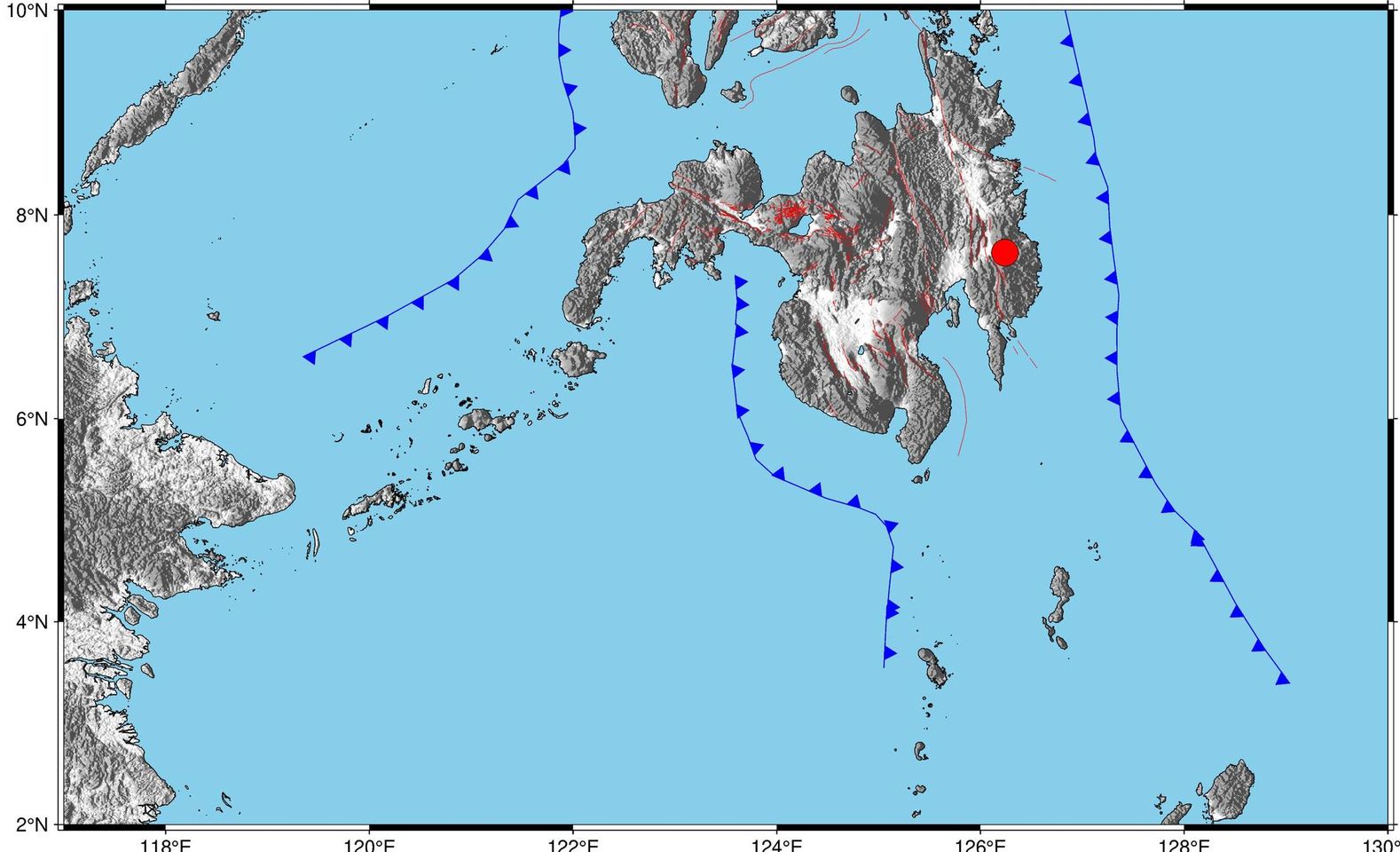DAVAO CITY (PIA) -- At exactly 6:44 pm, on February 1, an earthquake shook, Eastern Davao Region measuring magnitude 6.1 on the Richter Scale with a strength of intensity six (very strong), creating fear in Eastern Davao Region, affecting the island of Mindanao.
The earthquake was located two kilometers southwest of Compostela, Davao de Oro and according to the DOST-Philippine Institute of Volcanology and Seismology, it already recorded 390 aftershocks with a magnitude of 1.3 to 3.6. as of this writing. The tremor terrorized the people as it moved heavy objects and damaged goods in grocery stores, and partially damaged two houses in Nabunturan.
In its aftermath, the Davao de Oro Provincial Hospital in Montevista town prompted to declare a state of emergency since the earthquake limited them to handle other patients due to their damaged building and equipment. Two provinces namely Davao de Oro and Davao del Norte ordered the suspension of classes at all levels and work in the government, pending the results of the inspection of buildings and infrastructure conducted by their respective provincial disaster risk reduction and management offices.
The DOST-Philippine Institute of Volcanology and Seismology bared that at least nine strong to great earthquakes, measuring from intensity six to eight point three occurred in the area with history in 1891 to the present. The most damaging earthquake was on June 21, 1893, which produced numerous landslides, liquefaction, and structural damages.
Davao de Oro in Eastern Mindanao is one of the most seismically active regions in the country that include the East Compostela Valley fault, West Compostela Valley fault, Central Compostela Valley fault, and the Nabunturan-Caraga River-Mati City segment of the Philippine Fault. There are local faults nearby which are covered with deposits that could be a source for smaller earthquakes.
Eduardo Lauron, officer-in-charge of the Phivolcs in Davao Region, bared that three geologists will be deployed today to plot the fault that moved two days ago.
He said aftershocks will definitely occur, running more than a month.
“Check the cracks and structures that no longer work and be wary that may give in the moment, a tremor hits again,” Lauron said.
He warned that landslides, rock falls, and other mass movements may occur in the highland areas.
Lauron said liquefaction may also occur in shoreline areas.
He allayed fears of the occurrence of tsunami given that the epicenter of the tremor was in-land.
Angie Payosalan-de la Cruz, information officer of the Office of Civil Defense XI bared that most of the damages in the buildings were merely small cracks.
She said the provincial governments of Davao del Norte and Davao de Oro have already gone through with their respective ground assessments and have ordered their constituents to return back to normalcy.
Lauron said the communities must prepare for aftershocks.
He encouraged residents to perform duck, cover and hold once a stronger tremor occurs.
“In homes and offices, heavy furniture should be strapped to the walls and hanging objects should be fastened to avoid injuries,” Lauron said.
He urged everyone to be cautions of buildings weakened by the previous tremor.
The DOST-PHIVOLCS maintains 16 seismic network all over the country. They have staff-controlled monitoring stations in Davao City, Bislig City and Kidapawan City with satellite telemetered seismic stations in Laak, Davao de Oro, Cateel, Davao Oriental, Talacogon, Agusan del Norte, Valencia, Bukidnon and Mati City, in Davao Oriental.
Visit their website at www.phivolcs.dost.gov.ph, its FACEBOOK page at (PHIVOLCS) and Twitter (@phivolcs_dost) accounts for earthquake information and volcanic updates. Earthquake observation can also be reported to the DOST-PHIVOLCS at telephone numbers (02) 8929- 9254; (02) 8426-1468 to 79 local 307 and 308. (JSGD - PIA XI)




